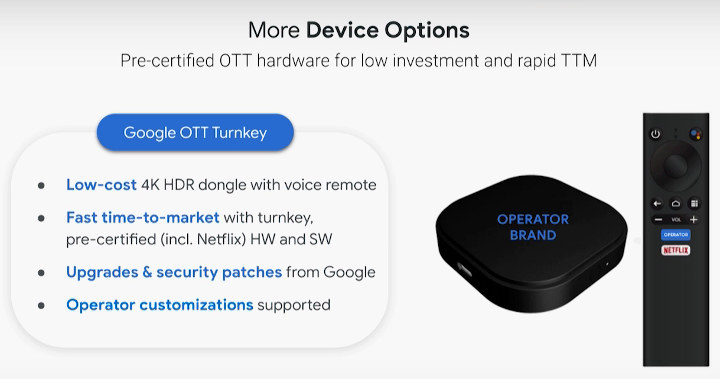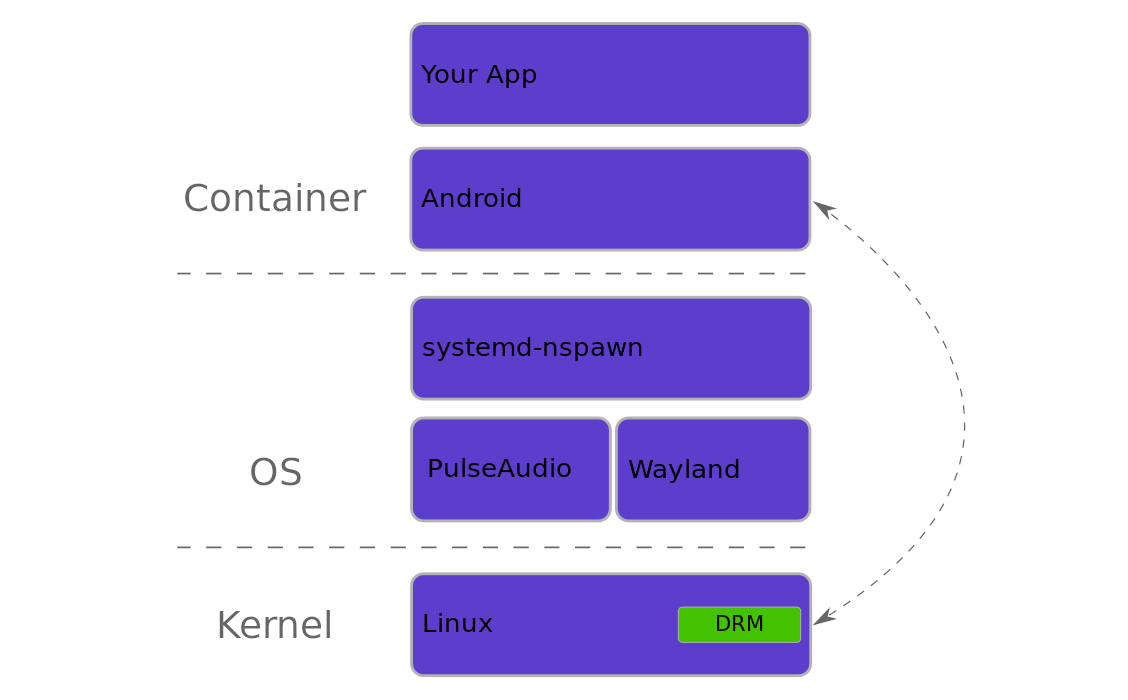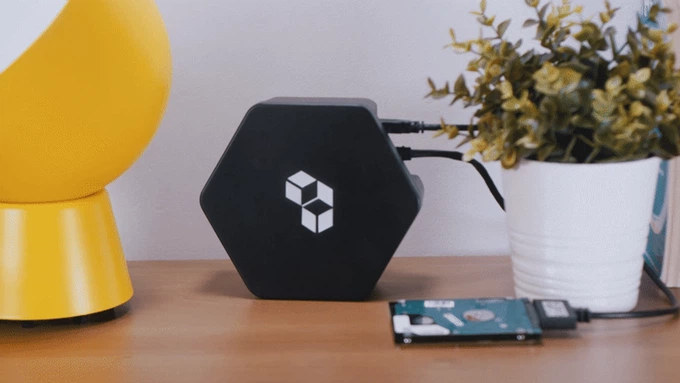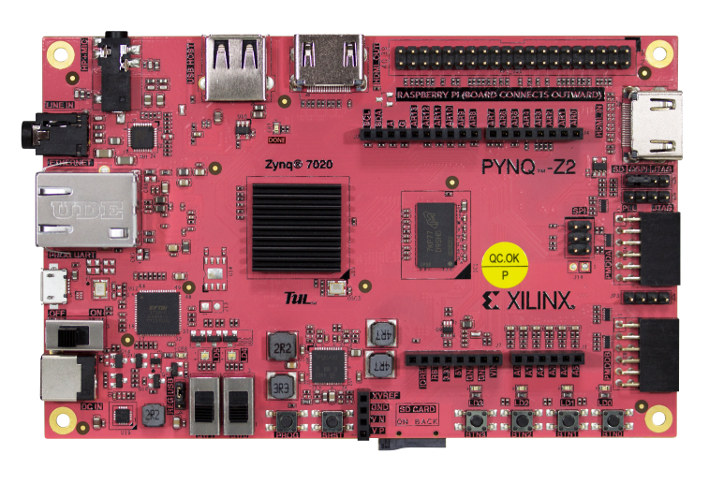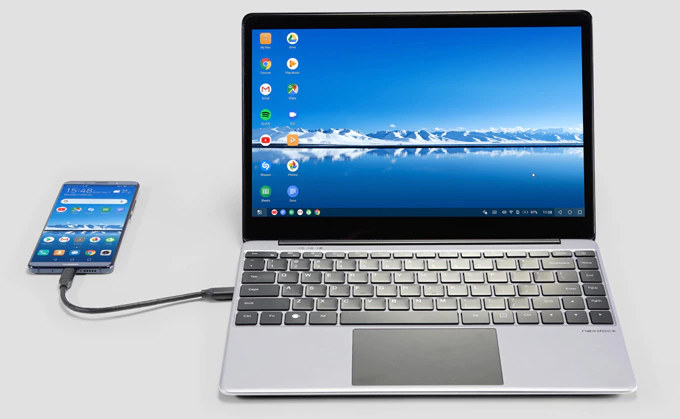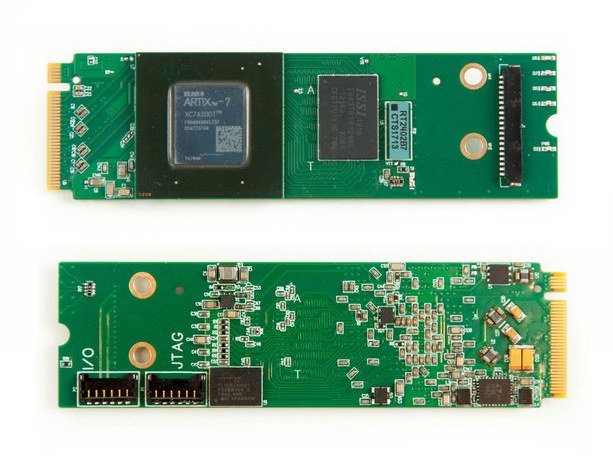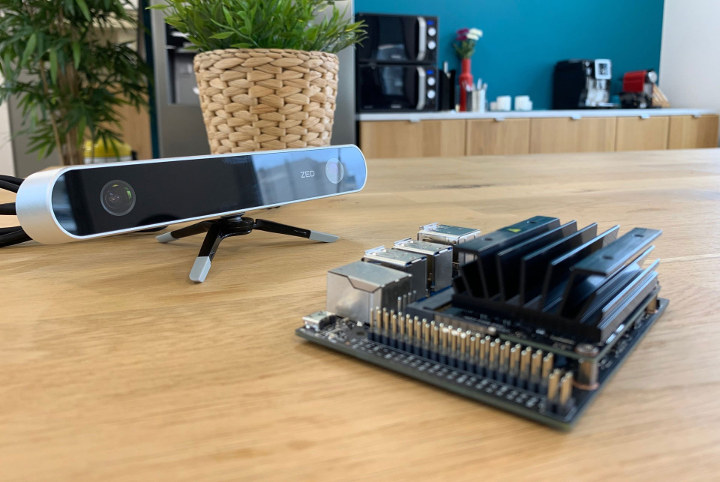Despite Google offering Android TV for an optimized big screen experience, many TV boxes are still running a heavily modified version of Android for smartphone, since it’s not that trivial for manufacturers and TV operators to get certification for Android TV. Operators normally just want their own branded hardware with their own streaming app and/or launcher, and “Google OTT Turnkey” aims to help this section of the market by providing pre-certified OTT (Over-The-Top) hardware with low investment and a quick time to market. The dongle/TV box will come with a voice remote control, include certified for Google services and Netflix, receive firmware from Google, while still allowing operators’ customization. The solution would allow a time to market of about 2 to 3 months. We learned about Google OTT Turnkey in the first part of “the Android TV Workshop” at the Connected TV World Summit 2019. The solution is quickly mentioned […]
SPURV Runs Android Apps in Linux over Wayland
We’ve previously seen it was possible to run Android apps natively inside Linux thanks to Anbox that leverages the Linux kernel in Ubuntu for better integration and performance, and uses an LXC container to run Android operating system. Collabora now offers a different solution with SPURV that runs the full Android OS, including a separate Linux kernel, in its own container and works over Wayland thanks to a graphics bridge from Android to Wayland. Four main components are part of the implementation: Android target device – This component integrates SPURV into Android by using the device infrastructure that the Android codebase provides, and the company specifically the target runs inside of a systemd-nspawn container. SPURV Audio – Bridges the Android Audio Hardware Abtraction Layer (HAL) to the host PulseAudio stack. SPURV HWComposer – Integrates Android windows into Wayland by implementing a HWC-to-Wayland bridge, where HWC is the Android API for […]
MINIX NEO Z83-4U Review – Ubuntu 18.04, Kodi 18, and Xibo Digital Signage
MINIX NEO Z83-4U is a Cherry Trail mini PC pre-loaded with Ubuntu 18.04. I received a sample a little while ago, and in the first part of NEO Z83-4U review I checked out the specifications and hardware that appears to be exactly the same a MINIX NEO Z83-4 Pro mini PC, except for the eMMC flash capacity that has increased from 32GB to 64GB. Since the mini PC comes with an older Atom X5-Z8350 processor, and is designed for commercial applications, I’ve decided to make a slightly different review. We already now how the system is supposed to perform thanks to benchmarks with NEO Z83-4 mini PC running Windows 10 Pro, so I’ll just check the main features are working as expected in Ubuntu 18.04, test audio & video support in Kodi 18.1, and try out Xibo Linux open source digital signage CMS and player on the mini PC. MINIX […]
Cubbit Aims to Crowdsource the Cloud for Improved Privacy (Crowdfunding)
Storing data in the cloud is convenient since you have access it from anywhere with an Internet connection, but there are privacy concerns, and you may have to pay a monthly fee if you exceed you storage limit. Cubbit aims to reinvent the cloud by not storing files in corporate datacenters, but instead relying on a swarm of “Cubbit Cells” to deliver fully private and reliable cloud storage without monthly. You’d just need to pay for the boxes and potentially extra local storage, and then it’s basically free to use afterwards. Cubbit Cell hardware specifications: Processor – Dual core Arm Cortex-A53 processor @ up to 1.2 GHz (possibly Marvell Armada 3700) System Memory – 1GB DDR4 Storage – Built-in SATA drive Networking – 1x Gigabit Ethernet port USB – 1x USB 3.0 port Power Supply – 12V Dimensions – 160 x 142 x 56mm The hardware looks like a basic […]
PYNQ-Z2 Python FPGA Board Adds Raspberry Pi Header, 24-Bit Audio Codec
PYNQ-Z1 is a board by Digilent powered by Xilinx Zynq-7020 Arm Cortex-A9 + FPGA SoC that’s designed specifically for PYNQ, an open-source project that aims to ease the design of embedded systems with Xilinx Zynq Systems on Chips (SoCs) by leveraging the Python language and libraries. PYNQ-Z2 is very similar to PYNQ-Z1, but it’s made by Taiwanese company TUL, and the board is slightly longer to allow for an extra 40-pin Raspberry Pi compatible header, and Analog Devices ADAU1761 24-bit audio codec. PYNQ-Z2 board specifications: SoC – Xilinx Zynq-7020 (XC7Z020-1CLG400C) dual core Arm Cortex-A9 processor @ 650 MHz with FPGA with 13,300 logic slices, each with four 6-input LUTs and 8 flip-flops System Memory – 512MB DDR3 Storage – Micro SD card slot, 16MB QSPI Flash with factory programmed globally unique identifier (48-bit EUI-48/64 compatible). Video – HDMI In and HDMI Out Audio – Mic in, Line Out ADAU1761 codec […]
NexDock 2 Laptop Shell Gets a Full HD Display, a USB type-C Port (Crowdfunding)
NexDock 14″ laptop shell was first introduced in 2016 to help people convert their smartphones or single board computers into a laptop with a display, a keyboard and battery. The crowdfunding campaign was successful with over $360,000 raised for the projects, and the first NexDock has been shipped to 2,600+ backers. The following year, the company – now called Nex Computer – announced plan to develop NexDock 2 with support for Intel Compute Cards. This did not quite work out as expected since Intel decided to stop further development of Compute Cards, but not all is lost as Nex Computer has now launched NexDock 2 with an aluminum body, a slightly smaller but higher resolution Full HD display, an edge to edge keyboard, and a USB type-C input port. NexDock 2 specifications: Display – 13.3” IPS LCD display with 1920×1080 resolution, 16:9 aspect ratio Video Input – Full-size HDMI input […]
NiteFury Puts Xilinx Artix-7 FPGA into an M.2 Card (Crowdfunding)
NiteFury is an FPGA development board, but it works differently than most, as RHS Research LLC put a Xilinx Artix-7 FPGA into an M.2 Key M card that you can easily insert into a laptop or mini PC with a 80mm M.2 socket. The board also includes DDR3 memory, and exposes a few configurable I/Os. You can use NiteFury to experiment with Xilinx PCIe IP, but also as FPGA co-processor for example to handle encryption, and encoding/decoding data. NiteFury card specifications: FPGA – Xilinx Artix XC7A200T-2FBG484E delivering up to ~1000 GMAC/s, with 215,360 Logic cells, 33,650 Slices, 269,200 CLB flip-flops, and 740 DSP slices. System Memory – 8 Gbit DDR3 (512 MB x 16) Host Interface – PCIe 4x gen 2 (2 Gb/s) External I/Os Via I/O connectors – 12x I/O including 4x selectable analog or digital – JTAG ready Via PCIe connector – 1x 3.3 V digital I/O (LED), […]
ZED Depth and Motion Tracking Camera Supports NVIDIA Jetson Nano Board
When NVIDIA launched their low cost Jetson Nano development board earlier this week, one reader asked whether it would support binocular depth mapping. It turns out Stereo Labs has updated the SDK (Software Development Kit) for the ZED depth and motion tracking camera in order to support the latest NVIDIA developer kit. Jetson Nano can manage depth and positional tracking at 30 fps in PERFORMANCE mode with 720p resolution, and while the more powerful and expensive Jetson TX2 achieves doubles the performance at 60 fps, it does so at a much higher cost. ZED depth and motion tracking camera specifications: Video 2.2K @ 15 fps (4416×1242 resolution) 1080p @ 30 fps (3840×1080 resolution) 720p @ 60 fps (2560×720 resolution) WVGA @ 100 fps (1344×376 resolution) Depth Resolution – Same as selected video resolution Range – 0.5 to 20 m Format – 32-bits Stereo Baseline – 120 mm Motion 6-axis Pose […]


